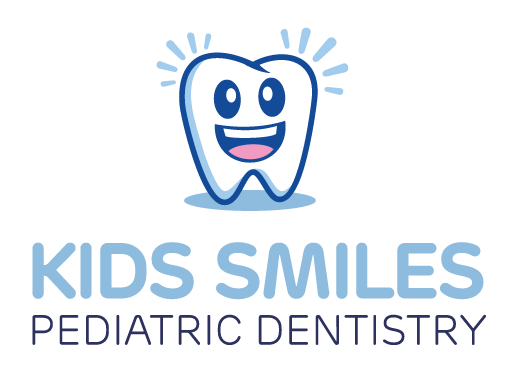Tooth Decay Treatment
Dr. Kelly Jobe | Pediatric Dentist | St. Louis, MO
Tooth decay in children
If you just found out your child has tooth decay or cavities, it is normal to feel worried. But, tooth decay is extremely common in children. So common that nearly 4 million preschoolers have some form of tooth decay, and is the most common infectious disease in children.
Tooth decay in the form of cavities is caused by plaque. Plaque is a sticky bacteria made up of the food we eat (especially sugar), that builds up on our teeth over time. That plaque buildup creates acid which tears through your teeth, creating cavities.
When cavities aren’t treated, they can go deeper into the insides of your teeth where there are nerves and blood (called the pulp). These deeper cavities can create pain, infection, swelling and premature loss of the tooth. It also can lead to more intensive procedures, like pulp therapy (a baby root canal), or even an extraction.
Even if the baby tooth falls out before a cavity gets that severe, it’s also not an ideal situation. That’s because baby teeth still need to stay in their place for as long as they were meant to, because they serve as placeholders for emerging adult teeth.
Luckily, there are many procedures that can treat tooth decay and prevent it from going any further. Let’s go over them.

How are pediatric cavities treated?
Cavities are treated in children with:
- Fluoride treatments
- Fillings
- Crowns
- Pulp therapy (a root canal for children)
- Extractions (with or without space maintenance)
We have listed these treatments here in order of how intensive they are. The earlier a cavity is caught, the less an intensive procedure is needed. If cavities are left untreated, there are still several treatment options that can be used before pulp therapy or an extraction is needed. We will give a short summary of what each treatment involves.
Fluoride Treatment
Regular fluoride treatments can prevent future decay, as well as reverse cavities that just start to form. A fluoride varnish is “painted” onto the tooth with a brush, and only takes a few minutes. Then it hardens and can be brushed away.
Fluoride has been used for decades to prevent cavities effectively. So much so that fluoride gets added to most drinking water for this reason. Even though the fluoride in tap water does help to an extent, it’s still present in pretty small amounts and is ingested differently. That’s why fluoride treatments – along with fluoride toothpaste – are effective treatments against cavities that are just starting to form.
Fillings
Fillings are the most common treatment option for tooth decay and cavities in children. They are the primary way to fix small to moderate size cavities, and prevent tooth decay from spreading.
Dental fillings for kids start with a clear explanation of what is to be expected, in a kid-friendly way. If using nitrous oxide, we start with that. Kids love picking out the right scent for their nose (and taking it home afterwards). Then the tissue is numbed with a jelly, and finally anesthetic is administered. Throughout the process there is so much discussion and guidance that many kids have a great experience.
Then, the dentist removes the cavity and fills the hole with a tooth-colored composite material and hardens it for strength. Modern dental fillings are easy to place, incredibly durable and inexpensive.
And don’t worry – Our dentists and staff are experienced in gently guiding your child through the process, calming any frazzled nerves!
Crowns
Pediatric crowns are tooth-shaped “caps” that restore a decayed tooth to its original shape, function, strength, and appearance. Crowns not only save decayed teeth, they also prevent decay from spreading. Crowns are cemented to the tooth, making it a great long-term solution to restore discolored, misshapen, broken, or decayed teeth.
Pulp Therapy
Inside of your child’s teeth are nerves, tissue and blood vessels, which together are called the pulp. When tooth decay occurs, this pulp can get infected or inflamed. Pulp therapy is a version of root canal especially for kids that saves the infected tooth from being lost. This is done by removing the infected tissue, applying a sedative material to the remaining tissue, and placing a final restoration.
Extractions
In some cases, tooth decay can be severe enough that an extraction is needed. In this case, an anesthetic is applied, and the tooth is removed. In most cases, a space maintainer is then placed to hold space until the permanent tooth erupts.
Is it worth fixing cavities in baby teeth?
It is vital to take care of baby teeth just as much as adult teeth. That’s because baby teeth still serve an important role: They guide adult teeth to where they should erupt. If baby teeth fall out prematurely from tooth decay, adult teeth can grow in where they shouldn’t, or become unable to grow in because they get overcrowded by surrounding teeth (impacted). Not to mention, untreated decay in baby teeth can lead to pain, infection, swelling and loss of confidence when smiling.
Questions for Dr. Jobe or the Kids Smiles Pediatric Dentistry team?
Dr. Kelly Jobe and the team at Kids Smiles Pediatric Dentistry are committed to providing the best pediatric dental care in the greater St. Louis, MO area! Please contact us with any questions regarding your kid’s dental health, we are here to help!
What Our Patients Say
Dr. Kelly Jobe & her staff are passionate about providing the best pediatric dental care in St. Louis, MO!
Stay connected with Kids Smiles
Stay connected with Kids Smiles
Quick Links
Contact Info
-
Kids Smiles Pediatric Dentistry
9735 Landmark Parkway Dr.
Suite #16 St. Louis, MO 63127 - (314) 270-5817
- info@kidssmilesdentist.com
© Copyright Kids Smiles Pediatric Dentistry. All rights reserved. Privacy Policy.

